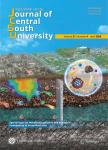Biomathematical study of time-dependent flow of a Carreau nanofluid through inclined catheterized arteries with overlapping stenosis
Biomathematical study of time-dependent flow of a Carreau nanofluid through inclined catheterized arteries with overlapping stenosis作者机构:Department of MathematicsQuaid-I-Azam UniversityIslamabad 45320Pakistan
出 版 物:《Journal of Central South University》 (中南大学学报(英文版))
年 卷 期:2017年第24卷第11期
页 面:2725-2744页
核心收录:
学科分类:0831[工学-生物医学工程(可授工学、理学、医学学位)] 0810[工学-信息与通信工程] 0806[工学-冶金工程] 08[工学] 0805[工学-材料科学与工程(可授工学、理学学位)] 0703[理学-化学] 0836[工学-生物工程] 0812[工学-计算机科学与技术(可授工学、理学学位)]
主 题:overlapping stenosed artery nanofluid Grashof number Brownian motion thermophoresis pharmacology
摘 要:This work is concerned with the analysis of blood flow through inclined catheterized arteries having a balloon(angioplasty) with time-variant overlapping stenosis. The nature of blood in small arteries is analyzed mathematically by considering it as a Carreau nanofluid. The highly nonlinear momentum equations of nanofluid model are simplified by considering the mild stenosis case. The formulated problem is solved by a homotopy perturbation expansion in terms of a variant of the Weissenberg number to obtain explicit forms for the axial velocity, the stream function, the pressure gradient, the resistance impedance and the wall shear stress distribution. These solutions depend on the Brownian motion number, thermophoresis number, local temperature Grashof number G_r and local nanoparticle Grash of number B_r. The results were also studied for various values of the physical parameters, such as the Weissenberg number W_i, the power law index n, the taper angle φ, the maximum height of stenosis δ~*, the angle of inclination α, the maximum height of balloon σ~*, the axial displacement of the balloon z_d~*,the flow rate F and the Froud number Fr. The obtained results show that the transmission of axial velocity curves through a Newtonian fluid(Wi=0, n=1, Gr=0, Br=0, Nt=0, Nb≠0) is substantially lower than that through a Carreau nanofluid near the wall of balloon while the inverse occurs in the region between the balloon and stenosis. The streamlines have a clearly distinguished shifting toward the stenotic region and this shifting appears near the wall of the balloon, while it has almost disappeared near the stenotic wall and the trapping bolus in the case of horizontal arteries and Newtonian fluid(Wi=0, n=1, Gr=0, Br=0, Nt=0, Nb≠0) does not appear but for the case of Carreau nanofluid bolus appears.



